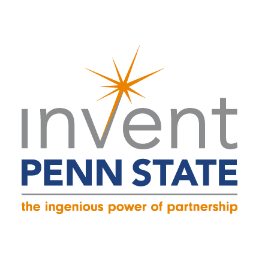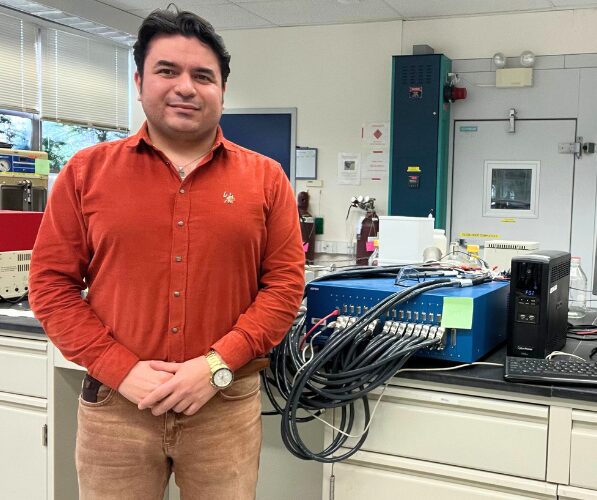Success Story
Researcher works to lower cost of hydrogen production
UNIVERSITY PARK – Hydrogen gas – while a potentially greener alternative to fossil fuels – is currently expensive to produce. Penn State PhD Candidate Arash Emdadi and his lab mates are working to improve the hydrogen production method to make it more cost-effective and environmentally friendly.
Hydrogen is used and has the potential to be used as a fuel source in a variety of industries, including the transportation, ammonia, steel, chemical, and trucking industries.
There are two main methods for hydrogen production. Traditionally, hydrogen gas is produced through a steam methane reforming (MSR) process, which employs natural gas and thus has environmental impact due to carbon dioxide emissions. Another method is electrolysis, in which an electrolyzer splits water molecules and produces hydrogen and oxygen gas. Emdadi is working towards commercializing a new electrolyzer invented by Professor Bruce Logan’s Lab in Civil and Environmental Engineering. The electrolyzer uses a cheaper membrane material for separation and utilizes renewable energy.
“The proton exchange membrane currently used is expensive. The membrane and the catalysts on the membrane can make up approximately 20% of the total cost of the electrolyzer,” Emdadi said. “We are trying to reduce the cost of those membranes to be able to build it cheaper. By doing that, we can reduce the cost of producing hydrogen. Also, the source of energy for ours will be solar or potentially wind and not natural gas. “
Emdadi recently took the novel electrolyzer for hydrogen production concept through the Invent Penn State regional NSF I-Corps short course program, which helps researchers gain valuable insight into entrepreneurship and develop valuable skills in connecting with customers.
“The short course was awesome, it was my first experience in customer discovery,” Emdadi said. “The short course program taught me that you should not have bias and you should be flexible – change your idea based on the problems and needs of the customer. At the end of the day, you want to sell your technology to customers, so you need to be able to pivot and revise your idea to align with the needs of customers.”
The Invent Penn State regional NSF I-Corps short course is currently accepting applications for its April 2024 cohort, learn more and apply.
Continuing the path towards commercializing his technology, Emdadi signed up for and is currently wrapping up his participation in the winter 2024 I-Corps National Teams program, which provides participants with grant funding to complete 100 customer interviews and significantly improves chances of receiving SBIR funding.
“The world needs clean and green hydrogen gas to produce ammonia for food and agriculture, and for heavy duty transportation that currently is not viable using batteries,” said Logan, who is the director of the Institute of Energy and the Environment as well as an Evan Pugh University Professor and Kappe Professor of Environmental Engineering, Civil and Environmental Engineering. “New types of water electrolyzers and processes could help meet those needs.”
Emdadi says he highly recommends both the regional short course and the National Teams program to PhD students looking to make a real impact with their research.
“In the beginning, it can be really hard to get into this entrepreneurial approach, but we have really great resources at Penn State and through NSF,” Emdadi said. “I think that it’s important to have a real impact in society. We should address the world’s problems by scaling up the technologies discovered at Penn State. I encourage students to join the short course and then the National Teams program, because they will learn so much. Joining the program may really change their lives.”
About NSF I-Corps
Penn State University is part of the NSF I-Corps Mid-Atlantic Hub, a network of universities, NSF-funded researchers, established entrepreneurs, local and regional entrepreneurial communities, and other federal agencies. Hubs work collaboratively to build and sustain a diverse and inclusive innovation ecosystem throughout the United States.






